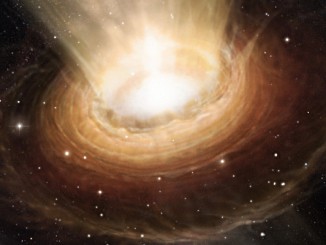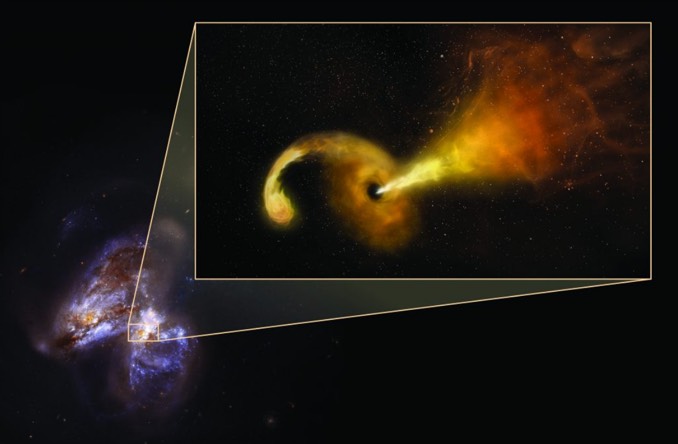
Studying what they first took to be a supernova explosion, astronomers have instead concluded they were witnessing the aftermath of a supermassive black hole at the core of a colliding galaxy consuming a nearby star, ripping it apart and ejecting a powerful jet of material. It is the first direct observation of a jet forming in the wake of a stellar “death by black hole,” a cataclysm known as a tidal disruption event, or TDE.
“Never before have we been able to directly observe the formation and evolution of a jet from one of these events,” said Miguel Perez-Torres, an astronomer at the Astrophysical Institute of Andalusia in Granada, Spain. “Tidal disruption events can provide us with a unique opportunity to advance our understanding of the formation and evolution of jets in the vicinities of these powerful objects.”
The event occurred in the core of a galaxy in the process of colliding with another nearly 150 light years from Earth. The colliding galaxies are known as Arp 299 and the black hole in question is 20 million times more massive than the Sun.
Using the William Herschel telescope in the Canary Islands, astronomers first detected a bright infrared emission from the nucleus of one galaxy in January 2005. Six months later, radio emissions were detected at the same location.
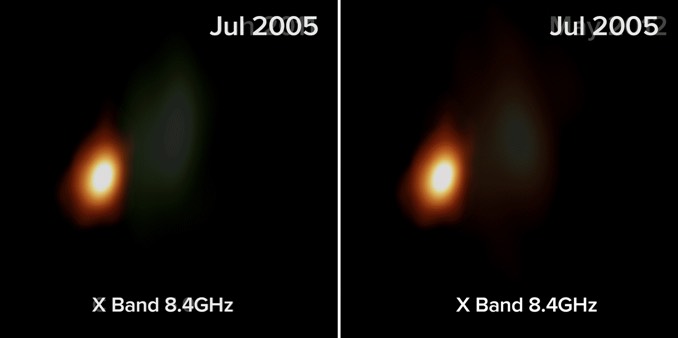
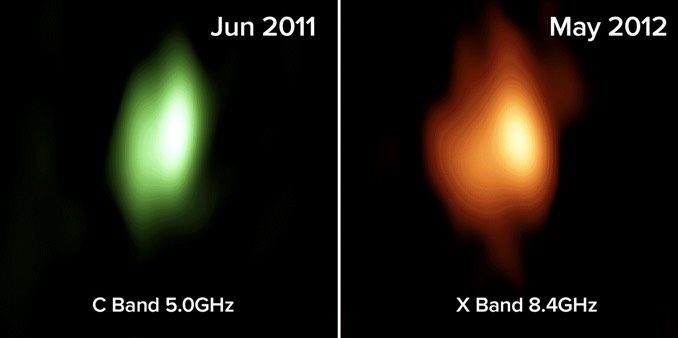
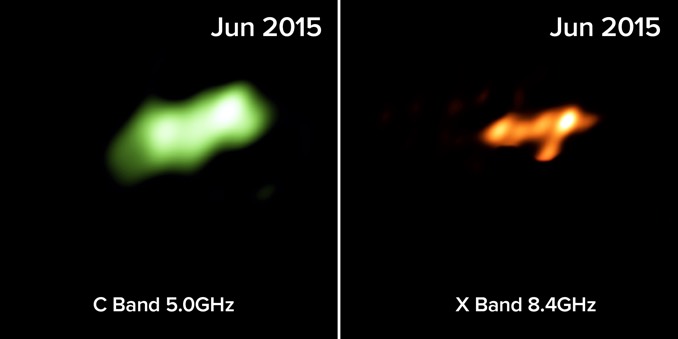
“As time passed, the new object stayed bright at infrared and radio wavelengths, but not in visible light and X-rays,” said Seppo Mattila of the University of Turku in Finland. “The most likely explanation is that thick interstellar gas and dust near the galaxy’s center absorbed the X-rays and visible light, then re-radiated it as infrared.”
Observations over the next decade using the Very Long Baseline Array, the European VLBI Network and other radio telescopes found radio emissions expanding in one direction, indicating a jet of material moving about one quarter the speed of light. Astronomers eventually concluded they were, in fact, seeing an evolving jet from the black hole as it consumed a nearby star.
“Because of the dust that absorbed any visible light, this particular tidal disruption event may be just the tip of the iceberg of what until now has been a hidden population” Mattila said. “By looking for these events with infrared and radio telescopes, we may be able to discover many more, and learn from them.”
A team of 36 scientists from 26 institutions around the world participated in the observations of Arp 299. Their findings were published in the 14 June issue of the journal Science.

